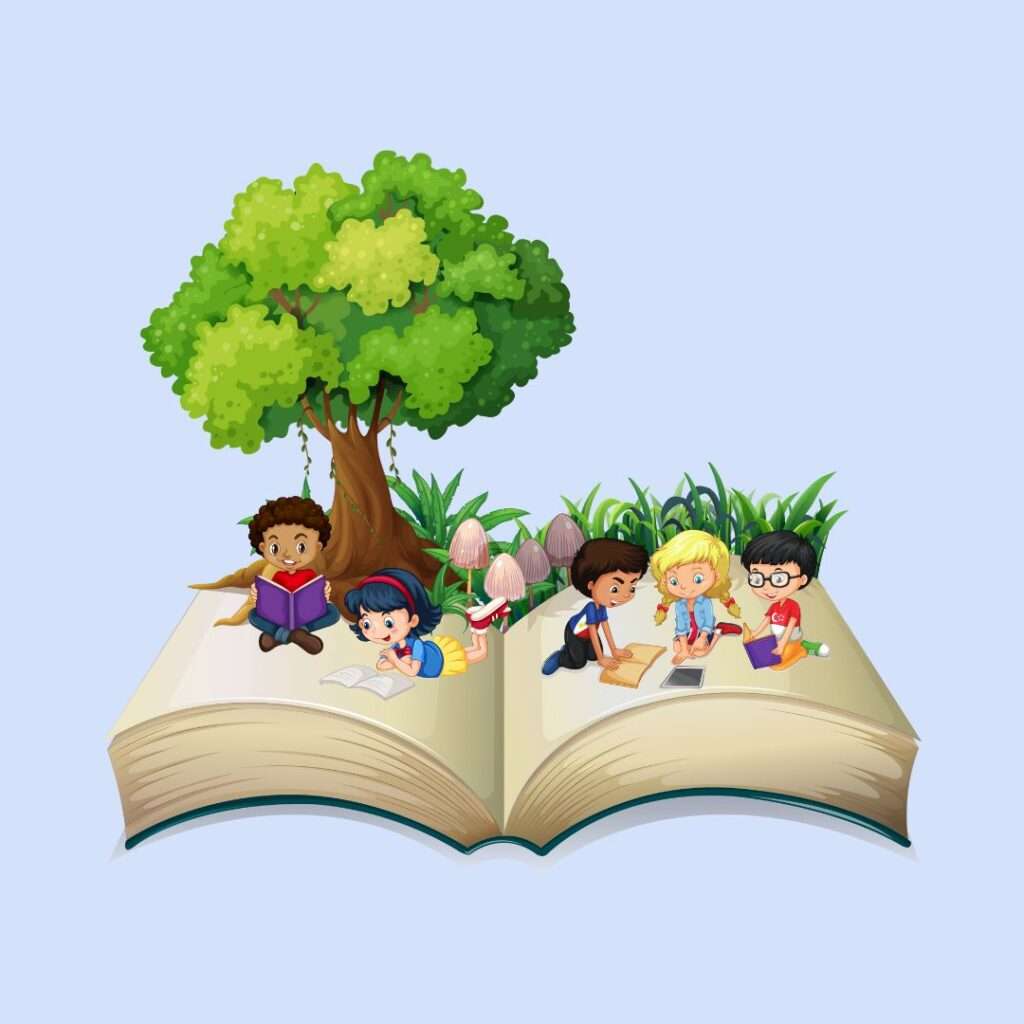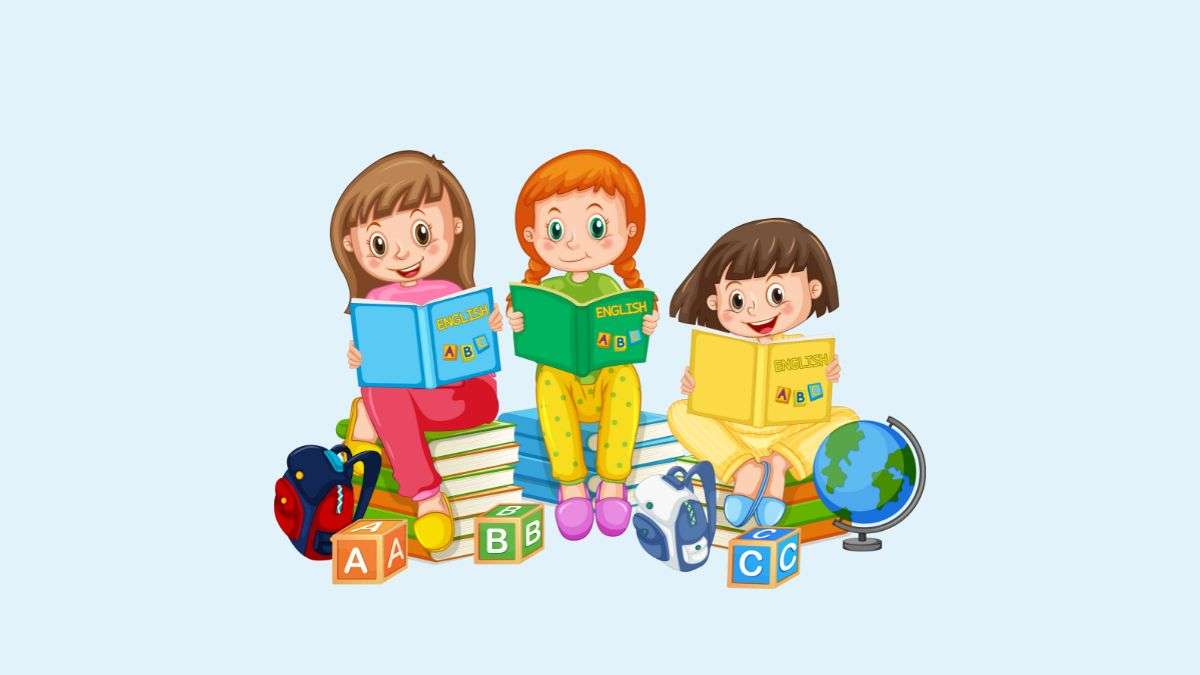Table of Contents
- Introduction
- 1. Penguin Random House
- 2. Scholastic
- 3. HarperCollins
- 4. Candlewick Press
- 5: Simon & Schuster
- 6. Hachette
- Conclusion
Introduction
What are some of the top publishers of children’s books? We will look at six of them here.
When selecting manuscripts, a good children’s book publisher prioritizes engaging storytelling, diverse representation, educational value, and age-appropriate content. They work closely with talented authors and illustrators to create captivating stories that inspire young readers’ imaginations. Quality publishers also stay attuned to children’s evolving needs and interests, ensuring their books remain relevant and appealing to each new generation.
Quality children’s book publishers play a crucial role in shaping the literary landscape for young readers. They curate a collection of stories that entertain, educate, inspire, and foster a lifelong love for reading. By setting high standards for their published books, these publishers ensure that children can access well-written, beautifully illustrated, and culturally relevant stories that help them develop essential skills, empathy, and a broader understanding of the world around them.
1. Penguin Random House
Penguin Random House is one of the world’s largest publishers, home to many beloved children’s book series. Some of their most popular series include The Magic Tree House by Mary Pope Osborne, which has sold over 134 million copies worldwide, and the Who Was? series, which explores the lives of notable figures throughout history in an engaging and accessible format for young readers.
Penguin Random House is a trusted choice for children’s books due to its expertise in publishing high-quality, diverse, and engaging stories. It works with renowned authors and illustrators to create books that capture children’s imaginations and encourage a love for reading. Additionally, Penguin Random House actively supports literacy initiatives and partners with organizations to promote reading among children from all backgrounds
2. Scholastic
Scholastic is a leading publisher of children’s books, known for their innovative approach to promoting literacy and their dedication to creating stories that resonate with young readers. Founded in 1920, Scholastic has become the world’s largest publisher and distributor of children’s books, reaching millions of children through its book clubs, book fairs, and educational materials.
Scholastic has a deep understanding of children’s interests and the ability to create stories that entertain and educate. They publish a wide range of books, from picture books for the youngest readers to middle-grade novels and young adult fiction, catering to the diverse needs of growing minds. Scholastic is also known for supporting teachers and parents in fostering children’s literacy skills through resources, guides, and programs like the Scholastic Summer Reading Challenge.
3. HarperCollins
HarperCollins has a rich history of publishing beloved stories that have become classics in children’s literature. They are the home of treasured characters like Shel Silverstein’s The Giving Tree, Maurice Sendak’s Where the Wild Things Are, and E.B. White’s Charlotte’s Web. HarperCollins continues contributing to the world of children’s books by publishing a diverse array of new titles each year, ranging from board books for babies to novels for young adults
HarperCollins is a go-to publisher for children’s books because of their unwavering commitment to quality storytelling and their ability to discover and nurture new talent. They work closely with established and emerging authors and illustrators to bring fresh, engaging stories to life. HarperCollins also prioritizes diversity and inclusion in their publishing, ensuring that children from all backgrounds can see themselves represented in the books they read.
4. Candlewick Press
Candlewick Press, founded in 1991, is an independent publisher that creates quality books for children. They are known for their beautifully crafted picture books, innovative novelty books, and thought-provoking novels for older readers. Some of their most celebrated titles include the Guess How Much I Love You series by Sam McBratney and the Judy Moody series by Megan McDonald.
Candlewick Press is a reliable source for children’s literature because it focuses on quality over quantity. They publish a carefully curated selection of books each year, ensuring that every title meets high standards for storytelling, illustration, and production value. Candlewick Press also fosters close relationships with their authors and illustrators, providing them with the support and creative freedom necessary to bring their best work to life
5: Simon & Schuster
Simon & Schuster is one of the “Big Five” publishers in the United States. For nearly a century, they have been creating books for children of all ages, significantly impacting the reading experiences of generations of young readers. Their most notable titles include Chris Van Allsburg’s The Polar Express and Henry Winkler and Lin Oliver’s Hank Zipzer series.
Simon & Schuster is a trusted name in children’s book publishing due to its long-standing commitment to producing memorable stories that stand the test of time. It works with a diverse roster of talented authors and illustrators to create books that entertain, educate, and inspire young readers. Simon & Schuster supports literacy initiatives and partners with organizations to promote reading and education.
6. Hachette
Hachette Book Group is a prominent global publishing company in children’s literature. Its children’s division publishes various books for all ages, from picture books for toddlers to compelling fiction for young adults. Notable series include Cressida Cowell’s How to Train Your Dragon books and Eoin Colfer’s Artemis Fowl series, which have garnered international acclaim and large, dedicated readership.

Hachette is recognized for its innovation in storytelling. They are known to collaborate with a vast and varied group of authors and illustrators, resulting in stories that not only mirror the diverse experiences of children but also collectively work to expand their horizons. Furthermore, Hachette emphasizes inclusivity and representation, ensuring children from various backgrounds can find characters and stories that resonate with their experiences.
Hachette’s approach to nurturing literary talent and providing comprehensive support to its writers and artists has allowed it to bring forth a repertoire of children’s books that are both enriching and captivating. Additionally, the publisher actively promotes literacy and reading habits, participating in numerous campaigns and initiatives to improve children’s access to books, particularly in underserved communities. Hachette is pivotal in cultivating tomorrow’s readers and thought leaders through these efforts.
Conclusion
The children’s book publishing landscape is rich with various esteemed publishers that have each contributed to developing and enriching young minds through literature. Top publishers of children’s books discussed—Penguin Random House, Scholastic, HarperCollins, Candlewick Press, Simon & Schuster, and Hachette—have set the bar high in the realm of children’s literature, offering an array of books that are not only entertaining but also serve as gateways to new worlds of knowledge, imagination, and understanding for children across the globe.
These publishers have a tremendous impact on shaping the future of children’s literacy by fostering a lifelong love of reading. They maintain dedication to quality, diversity, and accessibility in their publications, ensuring that children of different backgrounds, interests, and abilities can find stories that resonate with them and reflect their experiences. These top publishers’ legacy and ongoing work showcase their pivotal role in nurturing generations of readers, thinkers, and dreamers, affirming literature’s essential place in childhood development and education.
These publishing giants’ combined efforts contribute to cultivating personal enjoyment and growth among individual readers and foster a well-informed and empathetic society. These publishers actively address educational disparities and build a more literate and compassionate world by supporting literacy initiatives and emphasizing inclusivity in their storytelling.
